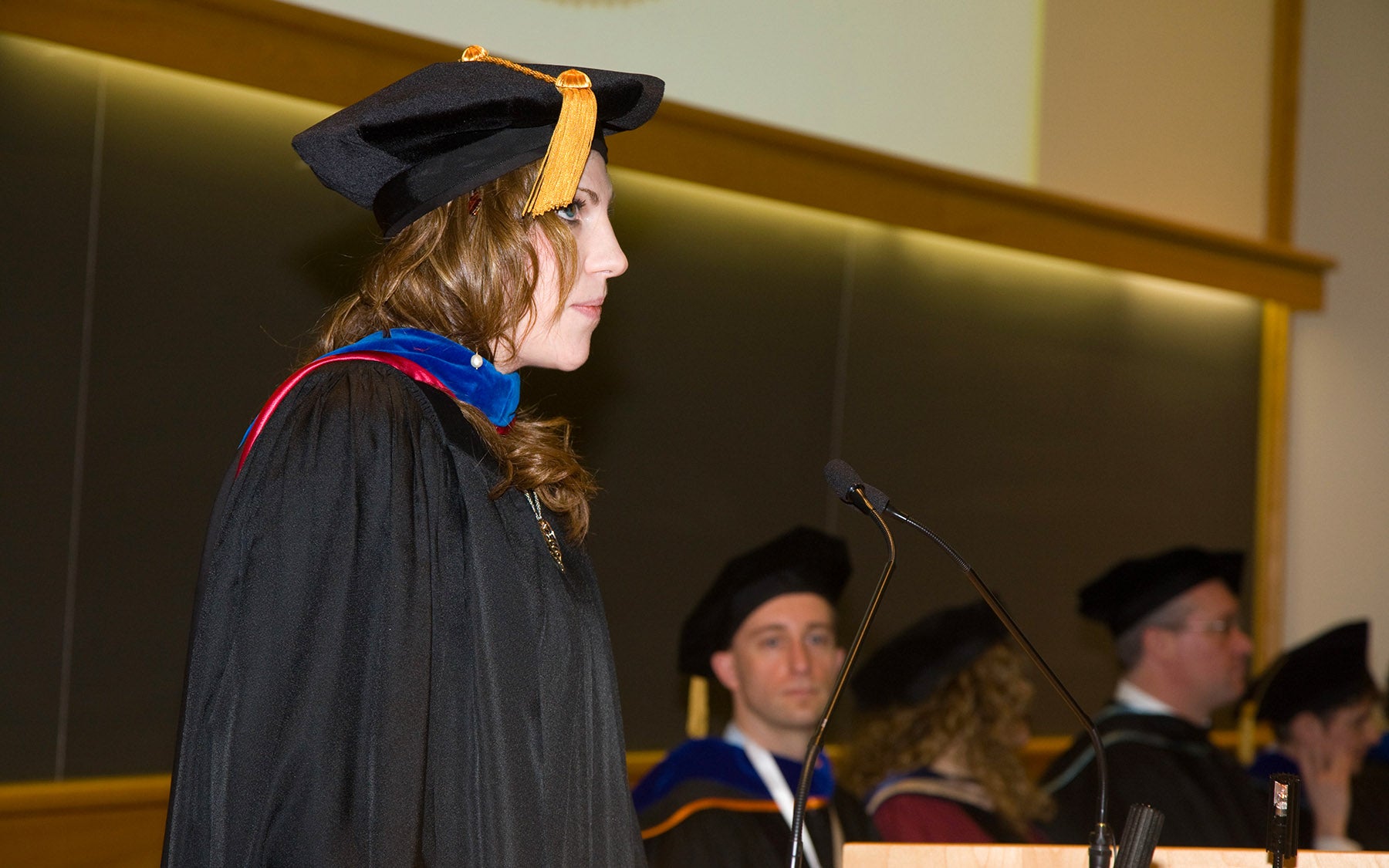The Watson School is proud of all our graduates. They’re successful, happy, and they have adorable dogs (at least some do). About a quarter of our graduates in the past 15 years have chosen careers outside of academic science, but the majority of our students want to be research professors. The most recent Watson School graduate to take up residence as an assistant professor, at the University of Michigan, is Monica Dus (’08). Her latest paper is just out in Neuron. And Monica was back at CSHL a few months ago to tell our prospective WSBS students about the School.

Monica remains a huge fan of CSHL. She recalled her first time at the Lab, interviewing for the Watson School, with nostalgia. As a high school student in Italy, she learned of the Lab because of its central place in the history of molecular biology—especially the famous Hershey-Chase experiment. And she continued to hear more about scientific discoveries at CSHL—oncogenes, RNAi, replication machinery—as she went through her undergraduate studies at the University of the Redlands in California. So when Monica finally set foot on the CSHL campus as a graduate student in August 2003, she was awed by working in the place where so much had happened. And she still feels slightly awed when she returns to campus.
After leaving CSHL, where Monica had performed her thesis research with Professor Greg Hannon, she moved on to do postdoctoral research with Dr. Greg Suh at the Skirball Institute at New York University Medical School. The similarity is that both Gregs were using the powerful genetics of the fruit fly Drosophila to answer big questions in biology. Whereas Monica had studied small RNAs in development in the Hannon lab, she turned to understanding the neurobiology of food choice in the Suh lab. She developed a project to define the mechanisms that neurons use to sense and respond to the nutrient profiles of different foods. For instance, if a fly—or a human—is starved of sugar, how do they know to select a high-sugar food, like an apple, rather than a sweet-tasting but not so nutritious diet cola? Monica has taken this question to her own lab at U of M, where she’s discovering which brain circuits underlie these types of food preferences and how the internal energy state of the fly can cause changes in the brain.

These days, a lot of discussions focus on the miserable state of academic research careers. On the whole, job prospects seem lousy—only about 14% of Ph.D. graduates in the biosciences end up in tenure-track positions. The average length of postdoctoral training is currently more than five years. Hundreds—or even thousands—of people apply for a single faculty position. And once in a faculty position, it takes an average of another three and half years to get funded by the NIH.
But Monica shows that it’s not all bad news. She received an NIH K99/R00 grant (the KangaROO), designed to allow postdocs to develop independent research projects and advance to faculty positions. It worked for Monica. “I applied to 33 places, and got three interviews. I was lucky to find a job on the first round,” she explained about her job search. “I really loved meeting different people and telling them about my research and my future goals. I also liked the they were interested in me and my ideas. But I did not enjoy the wait; it was very stressful. I also think my personality really helped with the interviews, being outgoing and sociable and smiling! Smiling is important.”
Monica is happy in her department. “I love thinking, and I love knowledge, and even more, the knowledge that there is so much out there that you cannot know it all. So when I looked for my next home, it was important to me to be in a place that wasn’t only worried about biomedical research but also biology and science in general. I love model organism research, and my department does a lot of this. Being around people that do all kinds of biology and science is really inspiring. I love that I can have a conversation about chromatin and one about plasticity on the same floor. Finally, it was important for me to be around colleagues that are aligned with my values as a scientist and as a person: to be rigorous but also loving and kind. Rigor and kindness are not antithetic qualities in science!”
Monica uses much of what she experienced at CSHL to develop her own lab’s philosophy. “Egalité! CSHL was very horizontal and everyone was approachable. That promoted scientific thought and innovation,” she remembers. “At CSHL, history of thought is important. It matters to know where hypothesis and ideas come from. A lot of things make sense when you see them in the light of human history and biological history.” And her Ph.D. advisor, Greg Hannon, made a lasting impression on her science. “He taught me always to follow each logical step closely, to think about the best possible experiment, and above all to be fearless about asking difficult questions. I can’t think of a better person to have trained with!”
She has her first Ph.D. students in the lab, Christina and Jenna, and she’s enjoying being a mentor. “I love having students and seeing them grow into capable scientists. I love helping my students find their own place in science. I love telling people that it is okay if it feels hard sometimes, but things get better and it is all worth it.“
